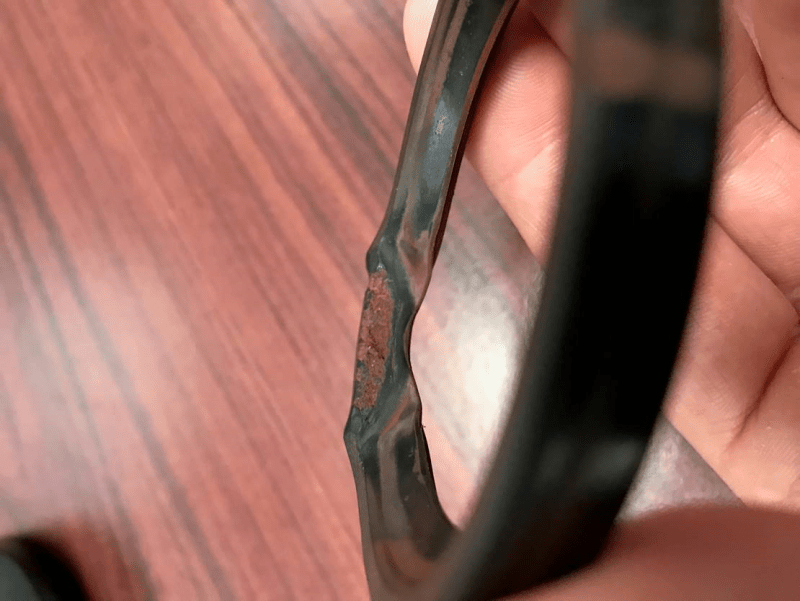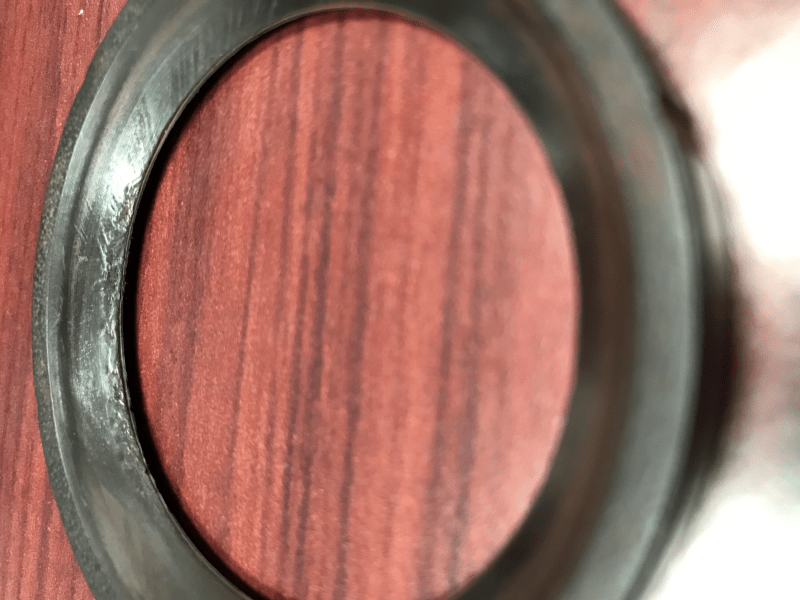We have actuated ball valves, 2" NPS, in 70-90 psig (~315-335 F) steam service. The valve is a floating ball design, 2-piece, full port. It does not have any slow open/close mechanisms. Below are some pictures of the seats after only 6 months of service. These valves are actuated, on average, probably 50-100 times a week. The seats are graphite-filled PTFE. The damaged seat is on the downstream side of the valve. I'm not sure of the orientation of the damaged part relative to the seat.
The valve manufacturer insists this looks like an overtemp/pressure problem, but at a boiler setpoint of 70 psig I fail to see how these even approach the T/P limits of the material. The highest I've seen the boiler is 90 psig. The seat appears to have some erosion on the inside face in the failed area, but the entire failure - what with the seat looking like it's pushed up towards the ball - almost looks like it was pinched by the ball. Can any of you with a more experienced eye help me out?


The valve manufacturer insists this looks like an overtemp/pressure problem, but at a boiler setpoint of 70 psig I fail to see how these even approach the T/P limits of the material. The highest I've seen the boiler is 90 psig. The seat appears to have some erosion on the inside face in the failed area, but the entire failure - what with the seat looking like it's pushed up towards the ball - almost looks like it was pinched by the ball. Can any of you with a more experienced eye help me out?




![[bigsmile] [bigsmile] [bigsmile]](/data/assets/smilies/bigsmile.gif)